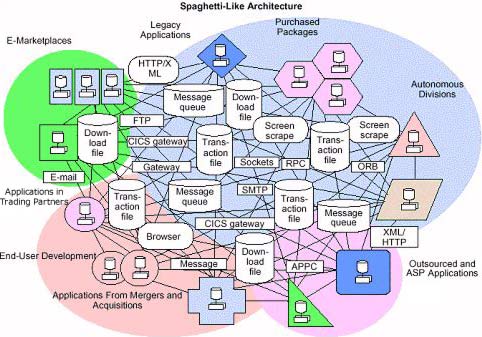
|
||||||
|---|---|---|---|---|---|---|
| Home | The Company | Publications | Products | Links | Tips | Jobs |

|
||||||
|---|---|---|---|---|---|---|
| Home | The Company | Publications | Products | Links | Tips | Jobs |
|
Companies always want to give their workers complete, transparent and real-time access to information. They also want the cost efficiencies expected from streamlining business processes.
Entire application integration (EAI) became very popular linking business applications such as supply chain management, customer relationship management and business intelligence. But EAI has more drawbacks than benefits. It uses arcane and proprietary technologies and creates information silos, which means a lack of communication with other systems. In fact, 70% of all EAI projects failed because of management issues.
 This presentation shows why the service-oriented architecture (SOA) with its loosely coupled independent services and defined interfaces better supports the requirements of business processes and users. The classical EAI approach of a monolithic stack in a hub-and-spoke architecture has many disadvantages, for example expensive systems regarding multiple implementations based on proprietary standards; the single hub presents a single point of failure. The enterprise service bus (ESB) is the new underlying integration technology and provides the same functionality as a "traditional" broker in a hub-and-spoke architecture. The key difference however is that the capabilities in an ESB are themselves SOA-based, since they are spread out across the bus and the capabilities are hosted in separately deployable service containers. It is also the integration platform designed to support the SOA paradigm and tie into legacy assets. An ESB puts you in the fast lane to SOA, as InfoWorld pointed out. SOA and ESB alone still can lead to spaghetti-like “service-oriented architecture.” Maybe business process modeling (BPM) is the rescuer or a model-driven SOA, based on the model-driven architecture (MDA) can be applied to achieve enterprise-level service-oriented architecture (SOA) in the real world. This presentation explains in detail the basics of EAI, SOA, ESB, and MDA as well as discusses the pros and cons. |